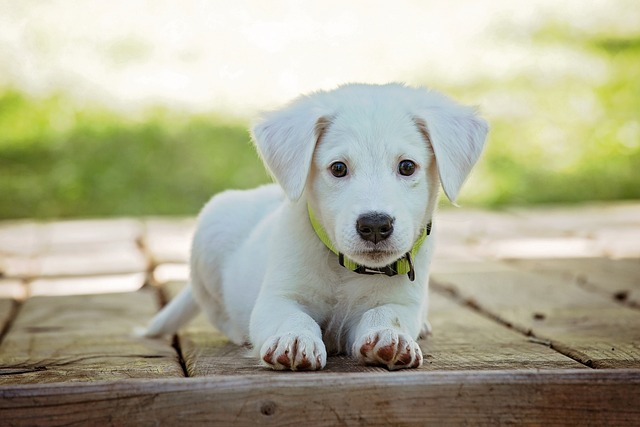
How can I tell if my dog's heatstroke is serious
Let’s be real: It’s a sticky August morning in Los Angeles, and you took your 2-year-old Golden Retriever, Max, for a walk a little later than usual
In the world of dogs, the Doberman stands out with its handsome appearance, agile posture, and loyal personality, becoming a beloved pet for many dog lovers. However, we often see the iconic upright ears of Dobermann dogs, which are not the result of natural growth but have undergone the process of artificial ear trimming. Why do Doberman dogs need to have their ears trimmed? Behind this lies not only the accumulation of history, but also the shaping of its characteristics, which has triggered people's thinking about animal welfare and traditional customs.
From a historical perspective, the Doberman Inu was initially bred as a working dog, primarily for hunting, guarding, and police dog missions. In these works, the shape of the ears has a significant impact on the performance of the Doberman. In its natural state, the ears of a Doberman Inu are relatively wide and drooping, which can easily accumulate dirt, breed bacteria and parasites. When working in the wild, they may also be scratched by tree branches, thorns, etc., increasing the risk of infection. After ear trimming, the ears become smaller and more upright, greatly reducing the risk of ear diseases and enabling them to maintain ear health in complex working environments.
In terms of practical work performance, ear trimming also has significant advantages. The upright ears enable the Doberman Inu to capture sounds more sensitively. When sound propagates through the air, the ears act as receivers, and upright ears can collect sound waves to a greater extent, allowing the Doberman to more accurately determine the source and direction of sound. When hunting, it can detect the movements of prey earlier; In the work of guards and police dogs, they can also quickly respond to abnormal sounds, protect their owners or carry out tasks. In addition, the ear trimmed Doberman Inu has a more imposing appearance, giving people a strong sense of intimidation. For Dobermann dogs that need to perform escort missions, this deterrent power can to some extent deter potential threats and have the effect of subduing the enemy without fighting.

From an emotional and aesthetic perspective, many Doberman enthusiasts believe that a trimmed ear Doberman is more in line with their perfect imagination of this breed. The upright ears, combined with the agile posture of the Doberman, showcase a unique beauty and temperament, full of strength and confidence. This aesthetic concept gradually formed over a long period of breeding and rearing, becoming a part of the culture of the Doberman Inu. When we see a Doberman standing with its ears trimmed and its head held high, the innate nobility and majesty make us marvel at it.
However, the act of cutting ears has also sparked widespread controversy. From the perspective of animal welfare, ear trimming is a surgical procedure that needs to be performed during the puppy stage of a Doberman Inu. During the surgery, puppies have to endure pain and risks, and there may also be problems such as infection and poor healing after the surgery. Some animal protection organizations believe that this behavior of artificially changing the body structure of animals violates their natural nature and is a violation of animal rights. They advocate maintaining the natural ear shape of the Doberman Inu and preventing ear diseases by strengthening daily care.
The act of trimming the ears of a Dobby dog has both profound historical origins and practical uses, as well as carrying people's emotions and aesthetic pursuits. But we cannot ignore the importance of animal welfare either. When deciding whether to cut ears for a Doberman, the owner needs to consider various factors comprehensively and weigh the pros and cons. If you choose to have your ears trimmed, you must choose a professional veterinarian and the appropriate timing to ensure the safety of the surgery and the health of the puppy. No matter what the final choice is, we should start with love and respect, let the Doberman grow up healthy and happy under our care, and write a warm and beautiful story between humans and dogs together. Let us not only inherit the culture of dog breeds, but also actively explore more scientific and humane ways to continue the unique charm of the Doberman Inu and allow them to showcase their charm in comfort and freedom.

Let’s be real: It’s a sticky August morning in Los Angeles, and you took your 2-year-old Golden Retriever, Max, for a walk a little later than usual

You're enjoying a summer afternoon at the park when you notice your dog has stopped panting and appears disoriented - their gums are bright red

Let’s paint the picture: You’re in your Denver apartment, watching your 4-year-old Boston Terrier, Ruby, plop down mid-play session with her favorite toy

Many dog owners notice their pets nails seem shorter after regular walks,but how much does this daily activity actually help?The answer depends on where you walk—concrete sidewalks or asphalt streets gently file nails as a dog's paws hit the ground

Most dog owners notice their pup scooting across the carpet at some point, but few connect it to impacted anal glands. These small sacs near a dog’s rectum secrete a scent for marking territory

Most vets agree that regular dog teeth cleaning is key to avoiding painful dental issues later. For healthy adult dogs, a professional cleaning at the vet’s office every 12 to 18 months usually works well.